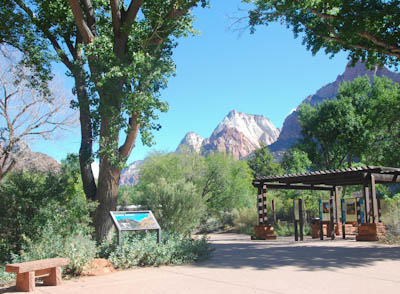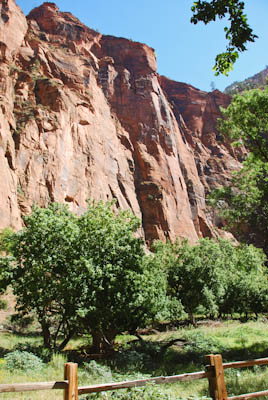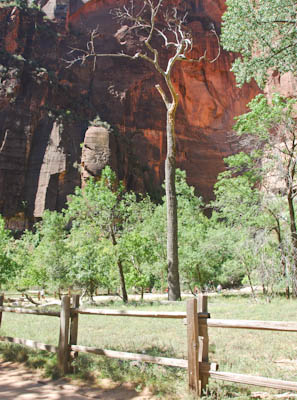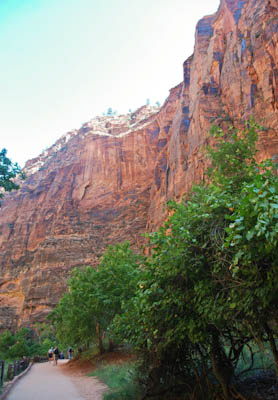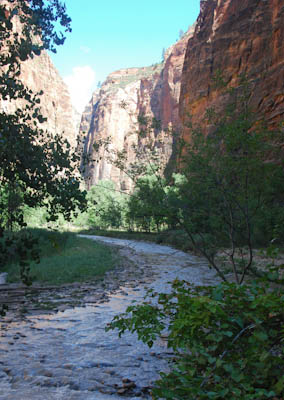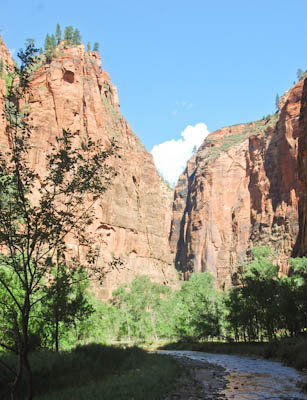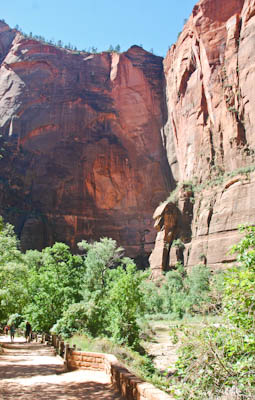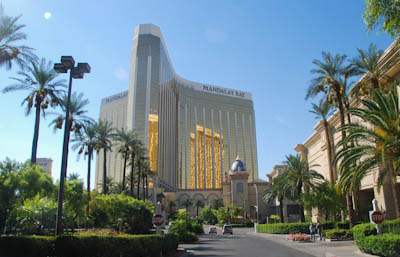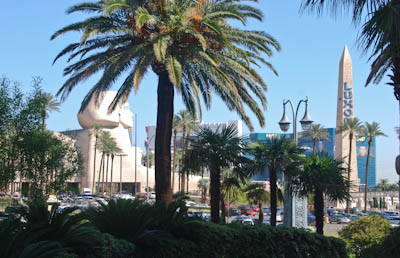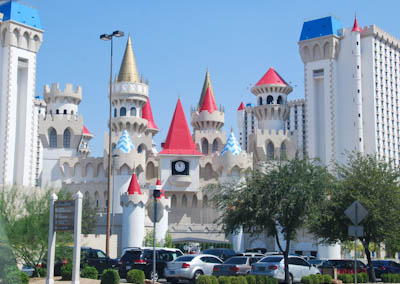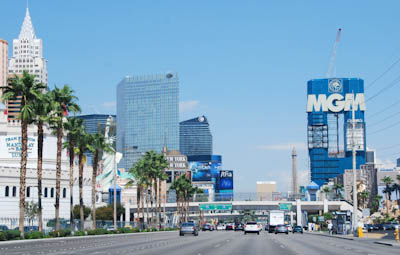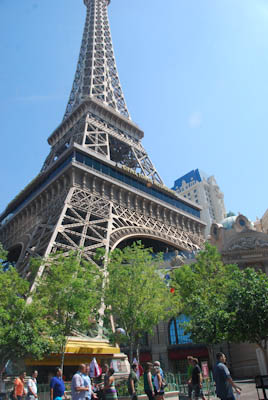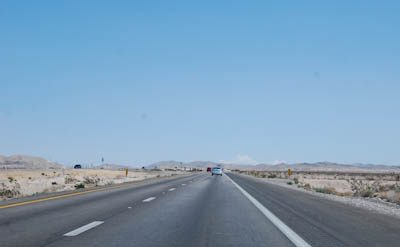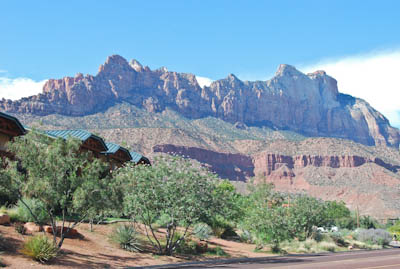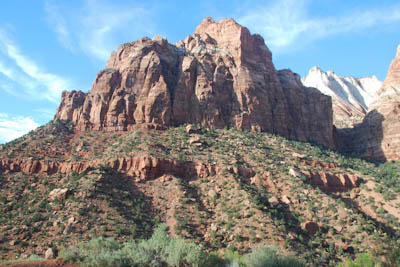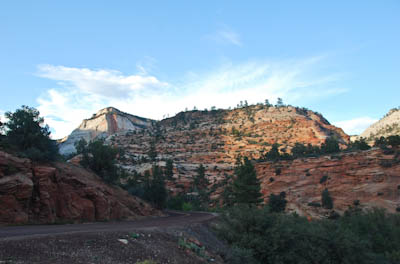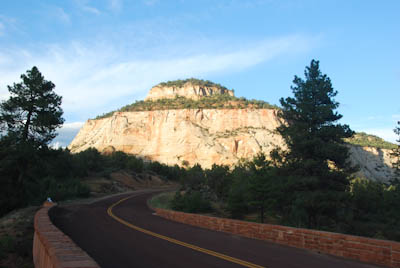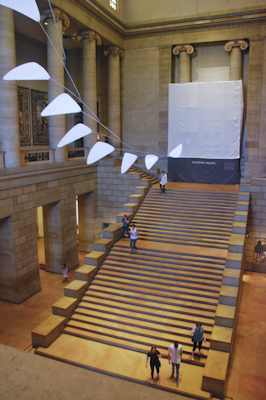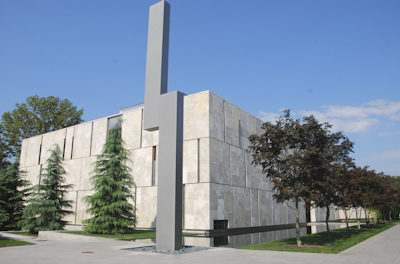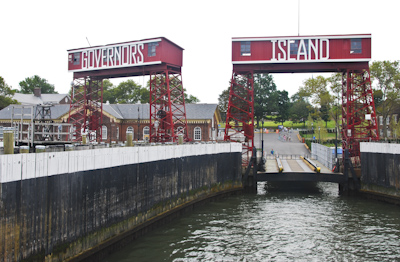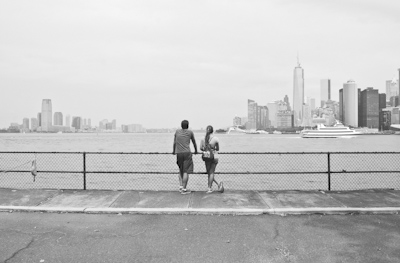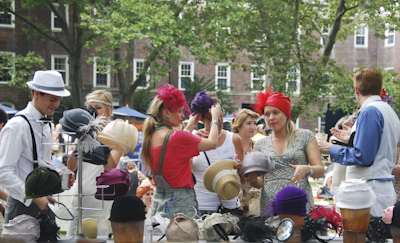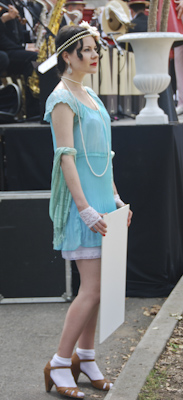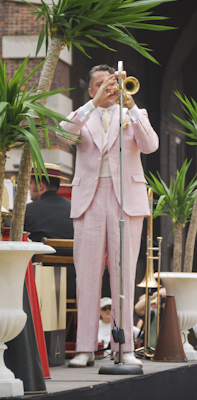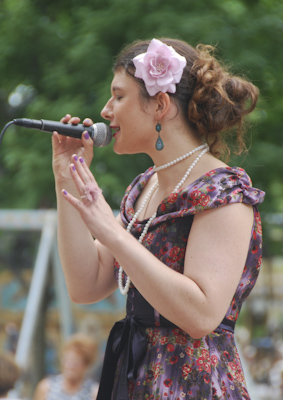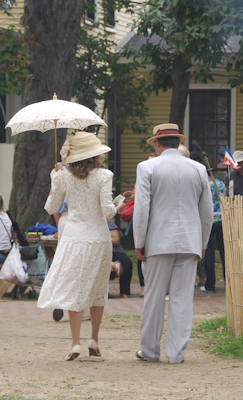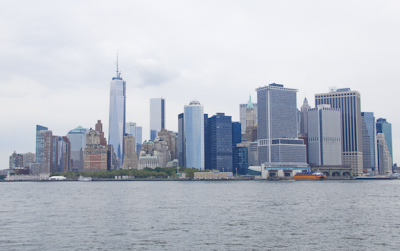Monday – July 29, 2013
The sun was bright and warm today as it had been every day for the last two weeks. I learned a new phrase in the Eastern Armenian dialect, “Shok eh!” Which means the weather is hot! Although I speak a different dialect of Armenian from the people here, I had plenty of opportunities to practice my language skills during the last two weeks. It was great fun to be in a foreign country and to be able to speak the language.
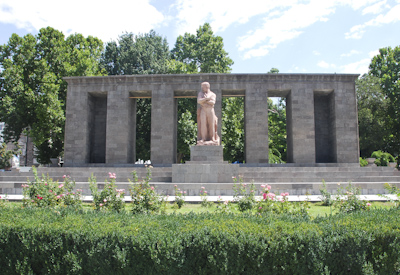 Statue of Stepan Shahumyan
Statue of Stepan Shahumyan
After a week in a new city, I usually learn to navigate the streets without feeling lost. Today, the streets of Yerevan were beginning to feel familiar and this weekend I was able to travel around the city easily. I left the hotel after breakfast and chose to walk on back streets to get to the western side of the city to explore areas a bit off the tourist track.
 Local Transportation
Local Transportation
The van in the above photo is one kind of public transportation which operates along predetermined routes. The local people cram themselves into the vans and tell the driver where they want to get off. There are also large public buses but many people prefer the vans because they move faster through crowded streets. The vans are a Russian tradition which are called, “marshrutkas.” They cost the same as the larger buses and have specific stops but will make other stops at the rider’s request.
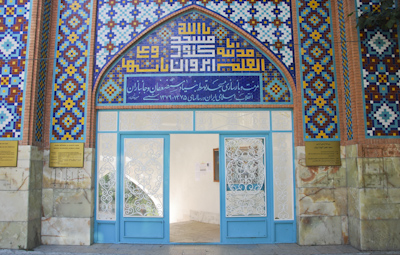 Entrance to the Blue Mosque
Entrance to the Blue Mosque
I continued to follow back streets and found a short cut to Lower Mesrop Mashtots Avenue, a major street in Yerevan. I happened upon the ‘Blue Mosque’ which is the only mosque in Yerevan. It was built in 1765 and serves as a reminder that the Persian Empire extended as far North as Yerevan. The mosque had fallen into ruin during Soviet times but has been carefully rebuilt by Iranian benefactors.
 Interior Courtyard
Interior Courtyard
I was greeted by an older Armenian woman who told me she was from Teheran. She explained that she worked there as a guide and language teacher for the Iranian students who lived in Yerevan. Iran has always had a large Armenian population.
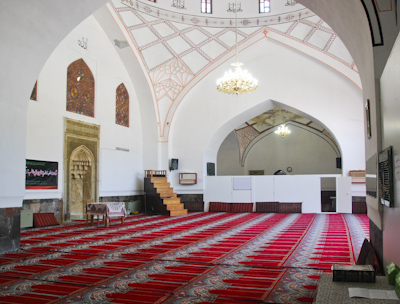 Interior of the Blue Mosque
Interior of the Blue Mosque
By the time we entered the mosque, we were joined by two German students of history. The guide explained the history of the Blue Mosque and commented that there are only three ‘blue’ mosques in the world. The other two are in Istanbul and Mecca and are identified by their beautiful blue tiles. I remembered the gorgeous blue interior tiles of the mosque in Istanbul when I visited in 2010.
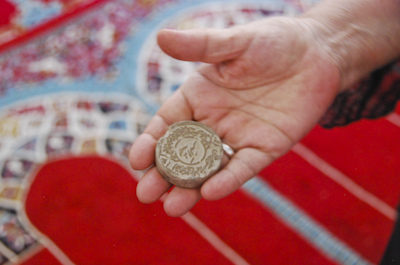 A Clay Tablet Called a ‘Mohr’
A Clay Tablet Called a ‘Mohr’
The guide stated that Iranians are Shias and she explained some differences between Sunni and Shia Muslims. The tour ended promptly at 1:00 as people began to congregate for the afternoon prayer. The German students invited me for a cup of tea in a local cafe. They said they had recently arrived in Armenia and were eager to speak to an Armenian descendent from the diaspora.
 Shared Vegetarian Lachmajoun
Shared Vegetarian Lachmajoun
At the outdoor cafe we joined an Armenian/American couple who were visiting to attend a sporting event in Yerevan. We all shared our experiences and opinions of world affairs and exchanged recommendations of sights. One of the best rewards of traveling for me, is to meet people from other places in the world to talk and share ideas and experiences.
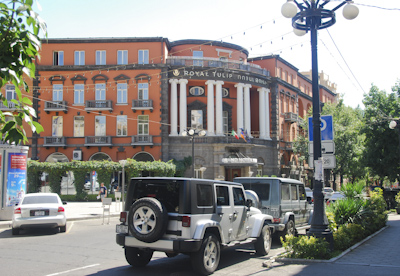 The Royal Tulip Hotel
The Royal Tulip Hotel
After some snacks and cups of strong Armenian coffee, we went our separate ways. I showed the German students how to read their fortunes in the bottom of Armenian coffee cups. This was an old Armenian custom. I continued to zig-zag my way across the center of the city to Abovyan Street. This was my last chance to see as much of Yerevan as I could.
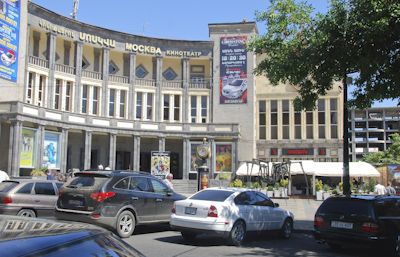 Yerevan State Hamazgayin Theater
Yerevan State Hamazgayin Theater
My goal was to see the chapel of St. Astvatsatsin, more commonly know as Katoghikeh. The small chapel was built in 1229 and is the oldest and only surviving medieval church in Yerevan. I thought this would be an appropriate finale to my weeks in Armenia. My guide book stated that Katoghikeh was “the cultural gem of Yerevan.”
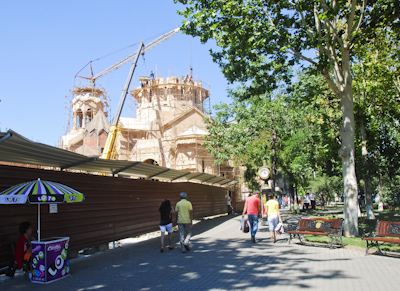 St. Astvatsatsin – Katoghikeh
St. Astvatsatsin – Katoghikeh
As I walked up Abovian Street just off the corner of Sayat Nova Avenue, I was greeted by a large construction site. At first, I was disappointed but then I saw the tiny ancient chapel nestled next to a new stone church under construction. The original church had been destroyed by an earthquake in 1679. During Russian domination of Armenia, the little chapel was hidden from the Soviets by other buildings and miraculously survived intact.
 The Tiny Chapel of Katoghikeh
The Tiny Chapel of Katoghikeh
The new building project is ambitious and will become an active religious complex with a residence for the Catholicos of the Armenian Church. The tiny chapel has survived natural disasters and endured the hardships of war and politics. Much like the Armenian people, the little chapel is a survivor which is being rebuilt and is looking toward a promising future.
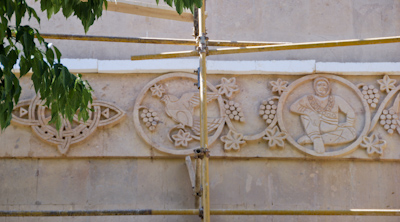 Details of the New St. Astvatsatsin Church
Details of the New St. Astvatsatsin Church
“Shok eh,” I thought as I walked back down Abovyan Street toward Republic Square. I decided to stop at a sidewalk cafe for a bottle of spring water and a light salad before returning to my hotel. As I sat in the shade of the cafe watching the people pass by, I heard my name called. I turned to see one of the people who I had befriended on our trip to Karabagh. He was a mathematics teacher from Saxony, Germany who came to Armenia to visit a friend and see the countryside. He joined me for a snack before leaving to meet some friends. We talked about our time in Yerevan and we compared experiences. It was nice to bump into a friend in a strange city.
 Selling Lotto Tickets
Selling Lotto Tickets
At six o’clock, I rushed back to the hotel to call my cousin Anahit to make plans to see her. Anahit and her husband, Karen, had invited me out this evening. They picked me up at the hotel and we drove to a lovely park. The air was cool and we sat at an outdoor cafe which featured live music.
 Anahit and Karen
Anahit and Karen
Anahit said that during the summer, she and her neighbors like to walk down to the park at night to sit and enjoy the entertainment. It was peaceful and we had a pleasant time talking and listening to music. It was a wonderful way to end my visit to the Yerevan and the Republic of Armenia.
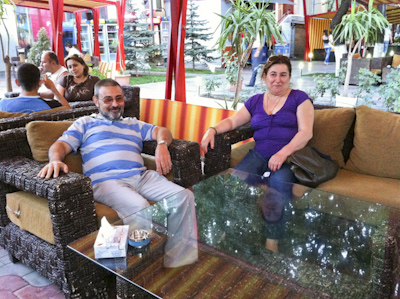 Karen and Anahit at the Cafe
Karen and Anahit at the Cafe
